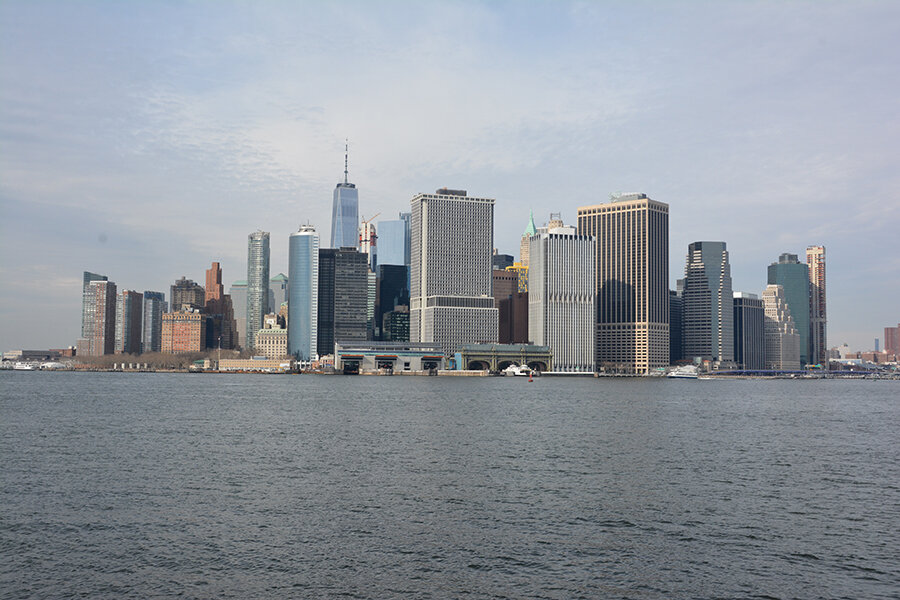New York Harbor: a no-go zone or an aquatic world?
Loading...
| GOVERNORS ISLAND, N.Y.
It was a short ferry ride from downtown Manhattan to Governors Island, but the noise and hubbub of the Big Apple faded to the background on the trip. The skyline remained looming, but the water lapping at the island’s shores served as a reminder that the concrete jungle is not so far from nature as some might think. It’s an ideal site for the Urban Assembly New York Harbor School, a public high school that connects its curriculum to the waters surrounding its campus. That ferry serves as an unconventional school bus.
I took a ride out to Governors Island on a breezy spring day to visit the school’s oyster hatchery. There, teachers and students lead the Billion Oyster Project, an effort to reestablish oyster reefs in New York Harbor. But I quickly learned that the project was also reconnecting New Yorkers to the natural ecosystem that surrounds them. These city kids had discovered an aquatic world a stone’s throw away from their homes that they’d previously seen as a no-go zone.
You can read my full story here. It’s our second installment of “Earth Beats,” a coordinated effort among Sparknews and 18 of the world’s leading news media to highlight local initiatives addressing global issues of waste and pollution to commemorate Earth Day.
This column first appeared in the April 18, 2019, issue of the Monitor’s Science & Nature Newsletter. Click here to subscribe to any of the Monitor’s free newsletters.
Why We Wrote This
Manhattan is often thought of as a concrete jungle devoid of nature. But a high school on Governors Island is offering New Yorkers a new perspective on their harbor.






